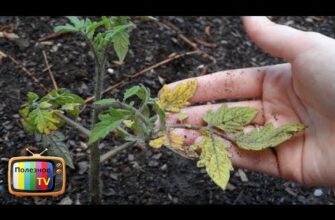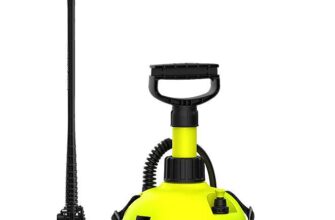- Почему нельзя срочно перестать делать с озимым чесноком перед уборкой
- Вредные привычки при уходе за озимым чесноком
- 1. Не перестаньте поливать чеснок за 20 дней до уборки
- 2. Не использовать удобрения перед уборкой
- 3. Не срочно проводить обрезку листьев
- Ошибки при поливе озимого чеснока
- 1. Срочно перестать поливать перед уборкой
- 2. Не поливать слишком часто
- 3. Испортить урожай неправильным поливом
- Опасность перекормки озимого чеснока перед уборкой
- Частые ошибки при прополке озимого чеснока
- 1. Не проводить своевременную прополку
- 2. Неправильное использование гербицидов
- 3. Недостаточная обработка от вредителей и болезней
- Почему нельзя срочно начинать рыхление почвы у озимого чеснока
- Ошибки при уборке озимого чеснока
- 1. Поздняя уборка
- 2. Срочная уборка
- 3. Неправильное отношение к луковицам
- Последствия позднего осеннего обрезания листьев у озимого чеснока
- Почему нельзя прерывать подкормку озимого чеснока за 20 дней до уборки
- Что происходит, если начать срочно снимать озимый чеснок сразу после дождя
- Почему нельзя срочно начинать сушить озимой чеснок на солнце
- Ошибки при хранении озимого чеснока
- Что грозит, если срочно начать использовать озимый чеснок после уборки
- Вопрос-ответ:
- Какие действия нужно прекратить с озимым чесноком за 20 дней до уборки?
- Что произойдет, если продолжать поливать озимый чеснок за 20 дней до уборки?
- Какой срок перерыва в поливе нужен с озимым чесноком за 20 дней до уборки?
- Что произойдет, если не прекратить полив озимого чеснока за 20 дней до уборки?
- Какой вред может нанести продолжение полива озимого чеснока за 20 дней до уборки?
- Видео:
- За 20 дней до уборки чеснока сделайте ЭТО обязательно
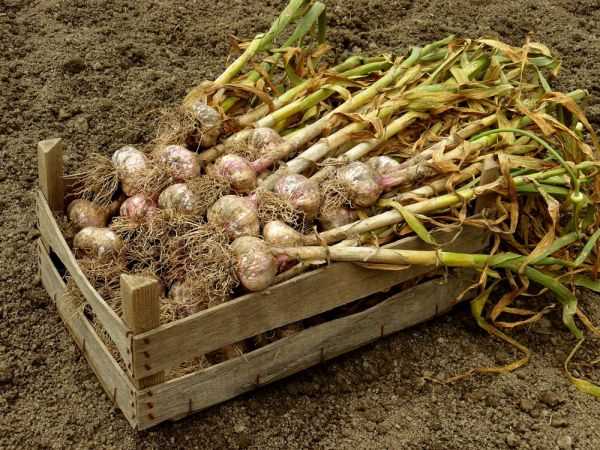
Озимый чеснок является одной из самых популярных культур среди садоводов и огородников. Он обладает множеством полезных свойств и используется в кулинарии и народной медицине. Однако, чтобы получить качественный и богатый урожай, необходимо соблюдать определенные правила ухода за растением.
Близится время уборки озимого чеснока, и срочно нужно перестать делать некоторые вещи, чтобы не испортить урожай. Важно помнить, что последние 20 дней перед уборкой играют важную роль в формировании качества и хранения чеснока.
Прежде всего, необходимо перестать поливать озимый чеснок. В это время растение уже переходит в фазу заполнения головок, и излишняя влага может привести к разрушению луковиц и прорастанию семян. Отсутствие полива также способствует формированию более плотных головок.
Также не рекомендуется срочно перестать делать обрезку и снятие цветоносов с озимого чеснока. Это позволит растению сосредоточить все свои силы на формировании больших и крепких головок. Отсутствие цветоносов также улучшает качество хранения чеснока.
Почему нельзя срочно перестать делать с озимым чесноком перед уборкой
1. Риск испортить урожай
Перестать делать определенные действия с озимым чесноком за 20 дней до уборки может повлечь риск испортить урожай. В это время растение находится в активной фазе роста и развития, и любое нарушение заботы о нем может негативно сказаться на его качестве и количестве.
2. Ухудшение хранения
Если перестать делать необходимые мероприятия перед уборкой озимого чеснока, это может привести к ухудшению его хранения. Особенно важно поддерживать оптимальные условия для созревания и сушки головок чеснока, чтобы они дольше сохраняли свои полезные свойства и вкус.
3. Потеря урожая
Срочное прекращение заботы о озимом чесноке перед уборкой может привести к потере урожая. Растения нуждаются в правильном поливе, подкормках и защите от вредителей и болезней во время последних дней перед сбором. Игнорирование этих мер может привести к снижению урожайности и качества продукции.
4. Падение иммунитета растений
Период перед уборкой озимого чеснока является критическим для его здоровья и иммунитета. В это время растения особенно уязвимы перед воздействием внешних факторов, таких как заболевания и погодные условия. Правильная забота и поддержка в этот период позволят растениям оставаться сильными и здоровыми.
5. Снижение качества продукции
Срочное прекращение необходимой работы с озимым чесноком перед уборкой может привести к снижению качества продукции. Неправильное уход за растениями может привести к появлению болезней, повреждению головок чеснока или потере их вкусовых качеств. Поэтому важно не пренебрегать правильным уходом перед уборкой.
Вредные привычки при уходе за озимым чесноком
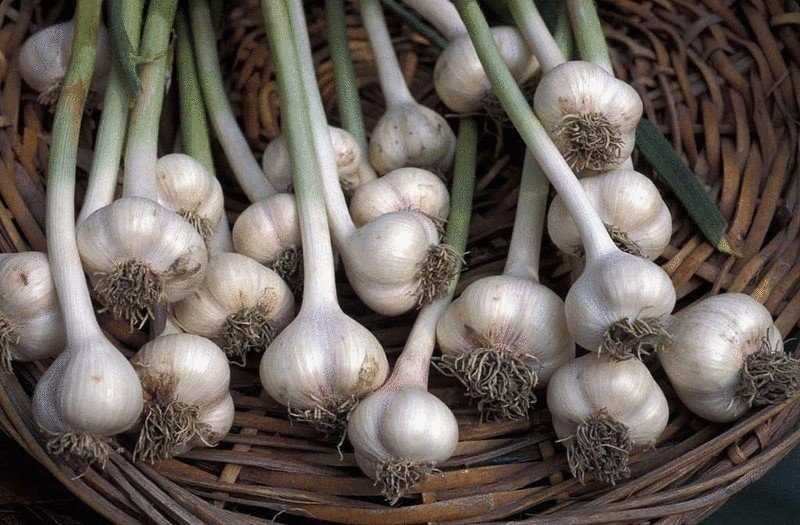
Уход за озимым чесноком требует особого внимания и заботы. От правильного ухода зависит урожай и качество продукции. Однако, существует несколько вредных привычек, которые могут испортить урожай и привести к негативным последствиям.
1. Не перестаньте поливать чеснок за 20 дней до уборки

Один из основных моментов перед уборкой озимого чеснока — это прекращение полива за 20 дней до сбора урожая. Многие садоводы допускают ошибку, продолжая поливать растения даже накануне уборки. Это приводит к накоплению лишней влаги в почве, что может привести к гниению луковиц и ухудшению качества продукции.
2. Не использовать удобрения перед уборкой

Перед сбором урожая озимого чеснока не рекомендуется применять любые удобрения. Чеснок должен успокоиться и перейти в стадию «созревания», и только после этого можно приступать к уборке. Использование удобрений перед уборкой может повлиять на вкус и сохранность луковиц, а также на длительность их хранения.
3. Не срочно проводить обрезку листьев
Озимый чеснок нуждается в своих листьях для нормального развития и формирования луковиц. Поэтому, не рекомендуется срочно проводить обрезку листьев перед уборкой. Желательно дождаться, когда листья начнут желтеть и сохнуть самостоятельно. Только после этого можно проводить обрезку, чтобы сберечь питательные вещества, содержащиеся в луковицах.
Ошибки при поливе озимого чеснока
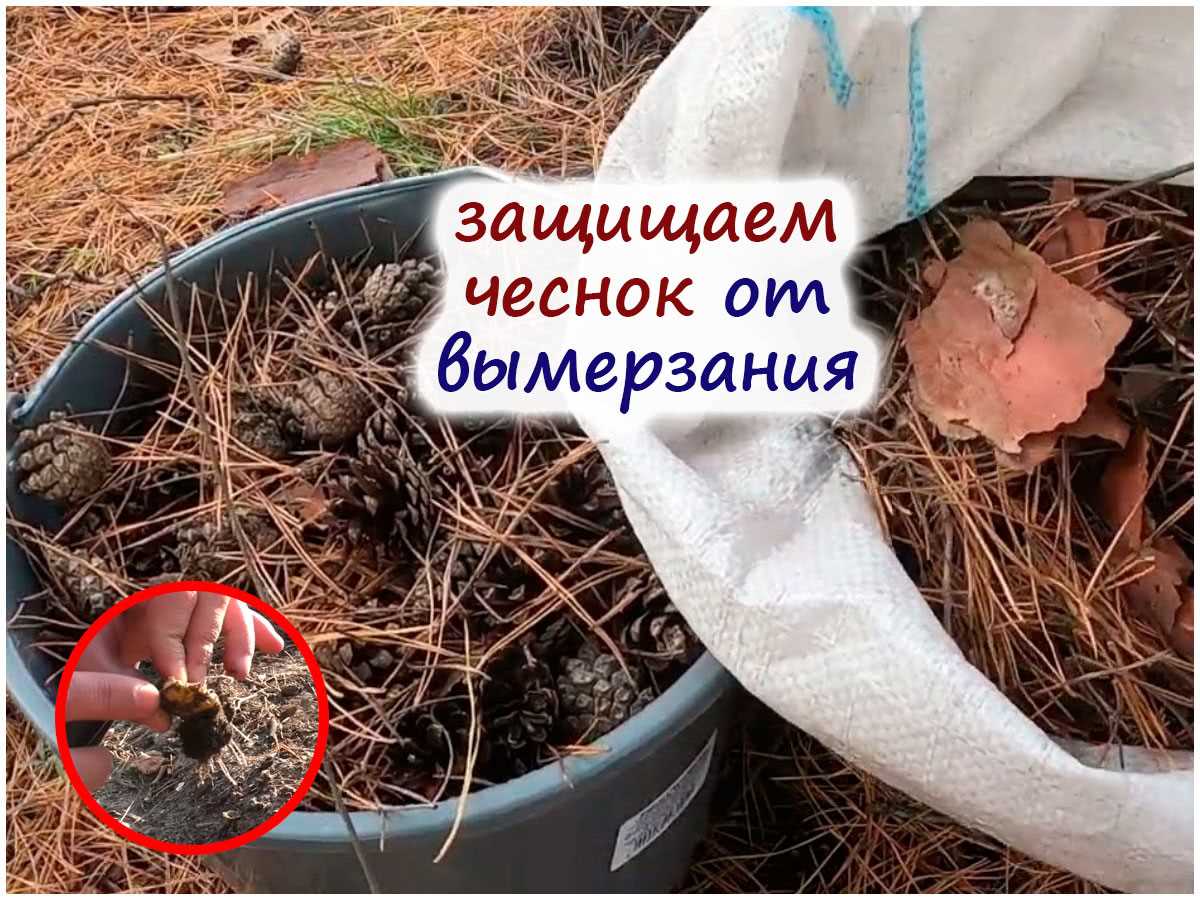
Урожай озимого чеснока — это важный и ценный результат многомесячной работы. Чтобы не испортить урожай, необходимо правильно ухаживать за посадками, включая полив. Однако существуют ошибки, которые следует избегать, чтобы не нанести вред растениям.
1. Срочно перестать поливать перед уборкой
За 20 дней до предполагаемой уборки озимого чеснока следует прекратить полив. Это позволит луковицам достигнуть нужной зрелости и сохранить качество урожая. Если продолжать поливать в этот период, чеснок может начать прорастать или подвергнуться гниению, что негативно скажется на его хранении и вкусовых качествах.
2. Не поливать слишком часто
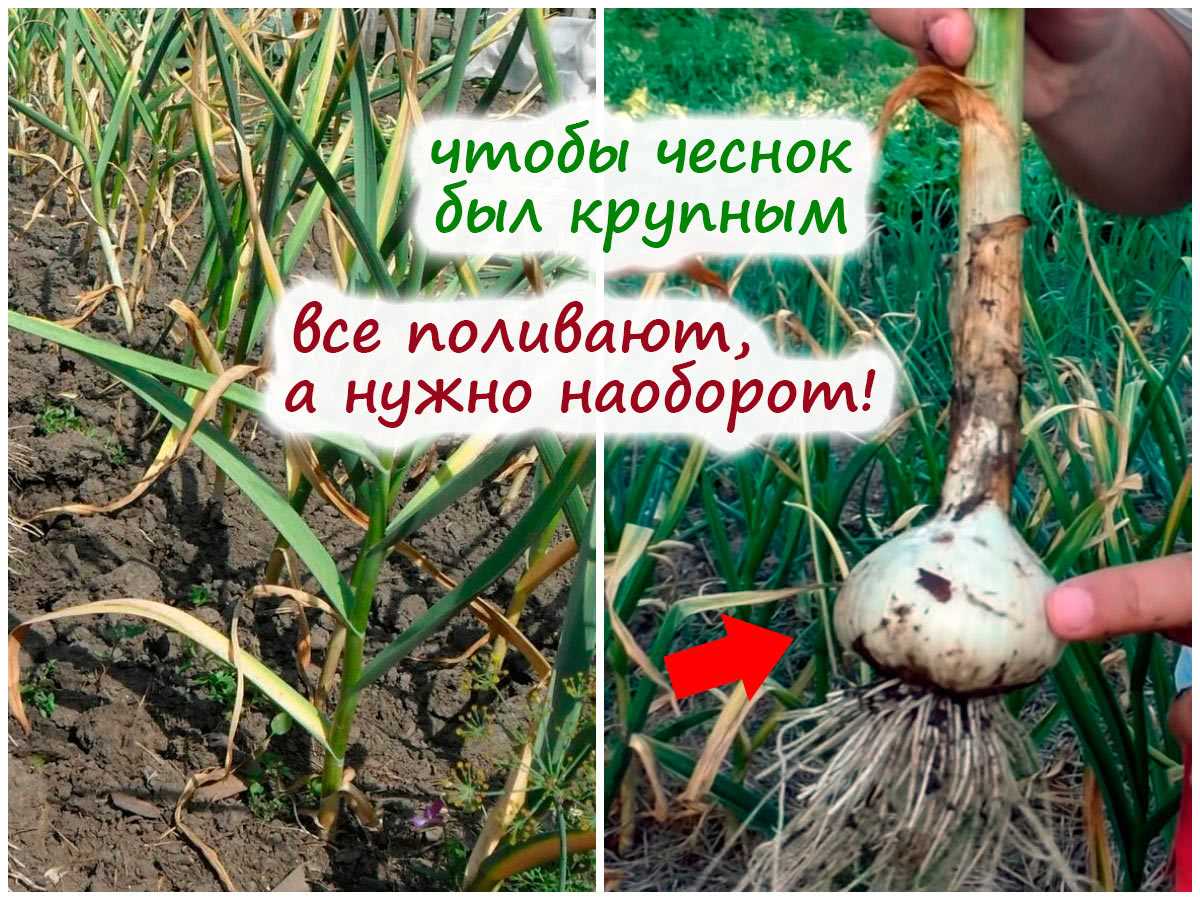
Озимый чеснок любит умеренное количество влаги. Переусердствовать с поливом также может привести к нежелательным последствиям. Слишком частый полив приводит к заболеваниям растений и снижению урожайности. Рекомендуется поливать по мере необходимости, особенно в периоды засухи, контролируя влажность почвы и не допуская ее пересыхания или затопления.
3. Испортить урожай неправильным поливом
Неправильный способ полива может негативно сказаться на урожайности озимого чеснока. Например, поливание сверху может вызывать гниение чеснока или его выветривание. Чтобы избежать подобных проблем, рекомендуется поливать растения у корней, используя капельный полив или поливочные системы.
Итак, для успешного выращивания озимого чеснока необходимо правильно управлять поливом. Следуя этим рекомендациям и избегая ошибок, можно получить качественный урожай чеснока, который порадует своим вкусом и сохранностью.
Опасность перекормки озимого чеснока перед уборкой

Уборка озимого чеснока — это важный этап возделывания этого культуры. От качества и урожайности зависит дальнейшее использование чеснока. Однако, за 20 дней до уборки есть необходимость срочно перестать кормить растение, чтобы не испортить урожай.
Озимый чеснок, как и многие другие культуры, имеет свой период роста и развития. В этот период растение активно поглощает питательные вещества из почвы и использует их для своего роста. Однако, если продолжать кормить чеснок за 20 дней до уборки, это может привести к перекормке и негативно сказаться на урожайности.
Перекормка озимого чеснока перед уборкой может привести к неправильному созреванию луковицы, ухудшению ее вкусовых качеств и даже испортить урожай в целом. Избыток питательных веществ может вызвать несбалансированный рост растения, что приведет к формированию маленьких луковиц или их деформации.
Чтобы избежать перекормки озимого чеснока перед уборкой, необходимо вовремя прекратить внесение удобрений и ограничить полив растения. Для контроля питательного режима можно использовать специальные тесты почвы или проконсультироваться с агрономом.
Частые ошибки при прополке озимого чеснока
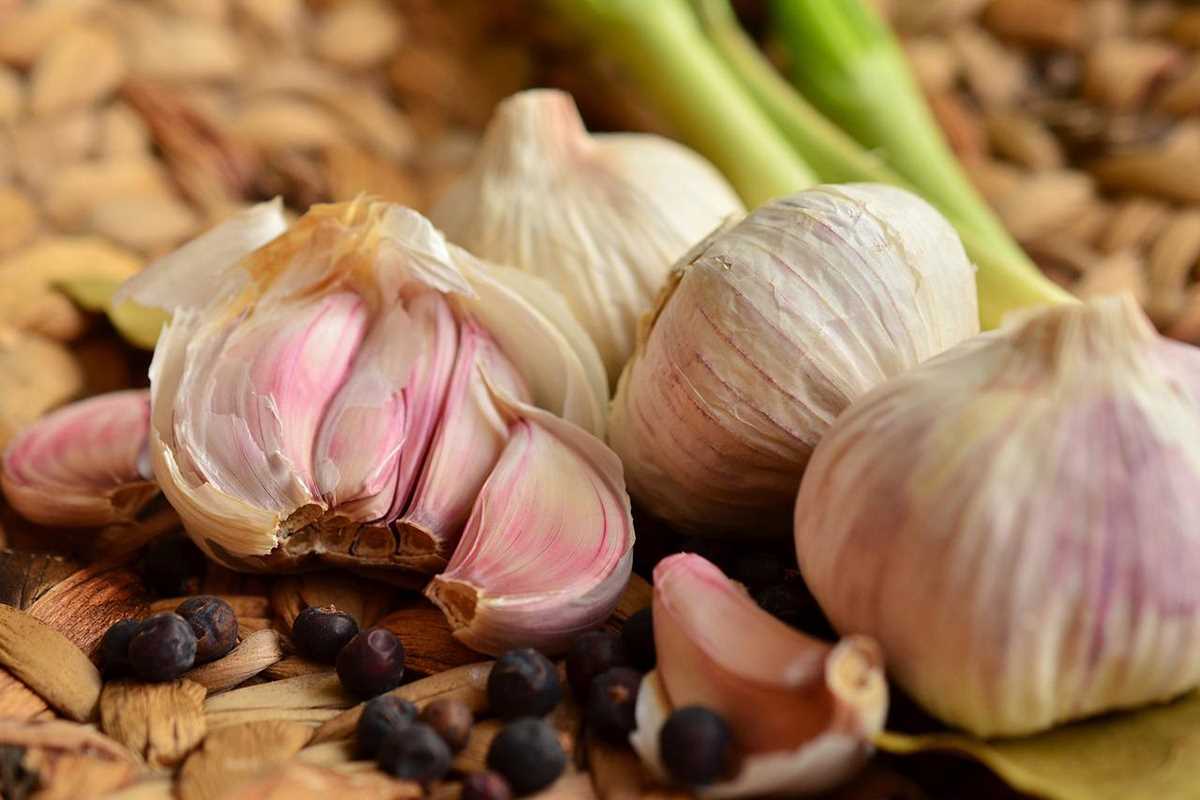
Прополка озимого чеснока – важный этап возделывания данного культурного растения. Ошибки, допущенные на этом этапе, могут существенно повлиять на урожайность и качество продукции. Рассмотрим несколько частых ошибок, которых нужно срочно перестать делать за 20 дней до уборки.
1. Не проводить своевременную прополку
Одной из основных ошибок при возделывании озимого чеснока является неправильное проведение прополки. Необходимо регулярно удалять сорняки, чтобы они не конкурировали с чесноком за питательные вещества и влагу. Срочно перестаньте оставлять сорняки на грядке и обеспечьте чесноку оптимальные условия для роста и развития.
2. Неправильное использование гербицидов
Применение гербицидов может быть эффективным способом борьбы с сорняками. Однако, неправильное использование этих средств может нанести вред чесноку. Необходимо строго соблюдать инструкцию по применению гербицидов и применять их только на отведенной площади и в рекомендуемых дозировках.
3. Недостаточная обработка от вредителей и болезней
Чеснок подвержен атаке различных вредителей и болезней, которые могут значительно снизить урожайность и качество продукции. Одной из частых ошибок является недостаточная обработка растений от вредителей и болезней. Срочно перестаньте игнорировать необходимость проведения профилактических обработок и применение соответствующих препаратов.
Итак, чтобы получить хороший урожай озимого чеснока, необходимо избегать частых ошибок при прополке. Срочно перестаньте недооценивать этот этап возделывания и обеспечьте чесноку оптимальные условия для роста и развития.
Почему нельзя срочно начинать рыхление почвы у озимого чеснока
Озимый чеснок требует особого ухода перед уборкой урожая. Важно перестать срочно начинать рыхление почвы за 20 дней до предполагаемой даты уборки.
Рыхление почвы в этот период может серьезно навредить растениям и повлиять на качество и количество урожая. Когда почва рыхлится, в нее попадает больше кислорода, что создает оптимальные условия для развития микроорганизмов, вредителей и сорняков. Они могут нанести значительный вред озимому чесноку и ухудшить его урожайность.
Срочное рыхление почвы также может привести к потере влаги, что негативно скажется на росте и развитии растений. Озимый чеснок нуждается в достаточном количестве влаги для образования крупных головок. Поэтому важно сохранить влажность почвы и не подвергать ее лишним стрессам.
Также стоит учитывать, что срочное рыхление почвы может повредить корневую систему озимого чеснока. Рыхлить почву вокруг растений может привести к повреждению корней и ослаблению растений, что может негативно отразиться на урожайности.
Вместо срочного рыхления почвы можно применить другие методы ухода за озимым чесноком, такие как мульчирование или прополка сорняков. Эти методы не только помогут сохранить влагу и защитить растения от сорняков, но и предотвратят возможные повреждения корневой системы растений.
Так стоп!!! Вы всё ещё не подписаны на наши каналы в Телеграмм и Дзен? Посмотрите: ТГ - (@historyfantasydetectivechat) и Дзен (https://dzen.ru/myshortsstorys)
Ошибки при уборке озимого чеснока
Уборка озимого чеснока — ответственный этап, который определяет качество и количество будущего урожая. Ошибки, допущенные в этот период, могут серьезно испортить результаты многих дней труда.
1. Поздняя уборка
Одной из наиболее распространенных ошибок при уборке озимого чеснока является его слишком позднее сбор. Если отложить этот процесс на несколько дней, чеснок начнет прорастать, что снизит его товарный вид и уменьшит хранение.
2. Срочная уборка

Но слишком ранняя уборка тоже может быть ошибкой. Если собирать чеснок до полной его зрелости, головки будут маленькими, а зубки — незрелыми. Такой урожай будет не только некрасивым, но и иметь низкую товарность.
3. Неправильное отношение к луковицам
Еще одна распространенная ошибка — неправильное отношение к луковицам при уборке. Часто фермеры слишком грубо относятся к головкам чеснока, что может привести к повреждениям кожи и поверхностных ран. Это открывает доступ к патогенным микроорганизмам, которые могут испортить урожай на стадии хранения.
Чтобы избежать этих ошибок, необходимо тщательно планировать уборку озимого чеснока, учитывать особенности сорта и климатические условия, а также проявлять осторожность и аккуратность при обращении с головками чеснока.
Последствия позднего осеннего обрезания листьев у озимого чеснока
Озимый чеснок — это культура, требующая особого ухода и внимания. Важной частью процесса выращивания является правильное обрезание листьев, которое выполняется за несколько дней до уборки урожая. Однако, многие садоводы часто игнорируют это правило и откладывают обрезку на потом. В результате, они сталкиваются с негативными последствиями, которые могут серьезно испортить урожай.
1. Замедление роста и развития
Позднее обрезание листьев у озимого чеснока может привести к замедлению его роста и развития. Листья являются фабрикой растения, где происходит процесс фотосинтеза и образуется питательный запас для луковицы. Если обрезка происходит позже, то растение не успевает накопить достаточное количество питательных веществ, что отрицательно сказывается на его развитии.
2. Увеличение риска болезней
Позднее обрезание листьев также увеличивает риск возникновения различных болезней у озимого чеснока. Обрезка способствует проветриванию растения и снижению влажности, что создает неблагоприятные условия для развития грибковых инфекций. Если обрезка происходит поздно, то растение остается слишком тесным и влажным, что способствует размножению болезнетворных организмов.
3. Повышенная вероятность повреждения луковицы
Позднее обрезание листьев может повысить вероятность повреждения луковицы при уборке урожая. Луковицы озимого чеснока находятся в непосредственной близости от листьев, и при обрезке их можно случайно повредить. Это может привести к утере значительной части урожая и снижению его качества.
Вывод: позднее обрезание листьев у озимого чеснока может иметь серьезные последствия, которые негативно сказываются на росте, развитии и урожайности растения. Поэтому, для сохранения и получения качественного урожая, необходимо срочно перестать откладывать обрезку и провести ее за 20 дней до уборки.
Почему нельзя прерывать подкормку озимого чеснока за 20 дней до уборки

Озимый чеснок — это культура, требующая особого внимания и заботы в процессе выращивания. Одной из важных составляющих успешного урожая является подкормка растений. Но важно помнить, что подкормку нельзя прерывать за 20 дней до уборки, чтобы не испортить урожай.
Озимый чеснок нуждается в постоянном питании, особенно в период активного роста. Подкормка обеспечивает растения необходимыми микроэлементами и питательными веществами, которые способствуют укреплению корневой системы и формированию крупных зубчиков чеснока. Прерывание подкормки может привести к недостатку питательных веществ и ослаблению растений.
Важно отметить, что в последние 20 дней до уборки озимого чеснока его рост замедляется, а растение переходит в фазу созревания. Именно в этот период растение активно набирает массу и формирует свои зубчики. Прерывание подкормки может нарушить этот процесс и привести к неполноценному развитию чеснока.
Кроме того, нерегулярная подкормка может спровоцировать разные физиологические нарушения в озимом чесноке, такие как растрескивание головок, образование волокнистых структур и снижение товарного качества. Поэтому необходимо срочно перестать прерывать подкормку озимого чеснока за 20 дней до уборки, чтобы не испортить урожай и получить качественную продукцию.
Что происходит, если начать срочно снимать озимый чеснок сразу после дождя
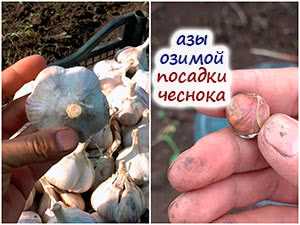
Озимый чеснок является одной из самых популярных культур, который выращивается в нашей стране. Он отличается уникальным вкусом и ароматом, а также обладает множеством полезных свойств. Однако, чтобы получить хороший урожай, необходимо соблюдать определенные правила ухода за ним.
Если начать срочно снимать озимый чеснок сразу после дождя, это может негативно сказаться на качестве урожая. Во-первых, мокрый чеснок будет тяжелее и сложнее собирать, что может привести к повреждению его луковицы. Во-вторых, влага на растении может спровоцировать развитие грибковых заболеваний, что также отрицательно скажется на урожае.
Поэтому, перед уборкой озимого чеснока необходимо дать ему время высохнуть после дождя. Для этого можно позволить растениям простоять несколько дней на солнце и ветру. Также рекомендуется не поливать чеснок перед уборкой, чтобы избежать повышенной влажности.
Необходимо перестать делать срочные сбор озимого чеснока сразу после дождя, чтобы не испортить урожай. Важно дождаться, пока растения высохнут и станут готовыми к уборке. Только в таком случае можно получить качественный и здоровый чеснок, который будет радовать своим вкусом и полезными свойствами.
Почему нельзя срочно начинать сушить озимой чеснок на солнце
Испортить урожай озимого чеснока можно, если начать сушить его на солнце слишком рано, не учитывая оптимальное время.
Озимый чеснок нужно сушить после полного созревания, когда его верхушки начинают сохнуть и желтеть. Срочное начало сушки может привести к недоответванию головок и потере вкусовых качеств.
Сушка чеснока на солнце должна проводиться в течение 10-15 дней, чтобы обеспечить полное высыхание и сохранение всех полезных свойств. Перестать сушить озимой чеснок на солнце нужно, когда стебли станут легко ломаться и головки приобретут сухой и твердый вид.
Важно помнить, что срочное начало сушки озимого чеснока на солнце может привести к попаданию влаги в головки, что повлечет за собой их гниение и потерю качества. Поэтому необходимо следовать рекомендациям и не спешить с процессом сушки.
Ошибки при хранении озимого чеснока

1. Не переставать поливать озимый чеснок перед уборкой.
Озимый чеснок нуждается в достаточном количестве влаги перед уборкой. Если перестать поливать чеснок за 20 дней до уборки, это может привести к сушке головок и ухудшению их качества. Урожай может быть испорчен и не будет долго храниться.
2. Перестать подкармливать озимый чеснок в последние дни перед уборкой.
Подкармливание озимого чеснока в последние дни перед уборкой может привести к неравномерному развитию головок и их неправильной форме. Чеснок может стать меньше и иметь менее выраженный аромат и вкус. Поэтому необходимо перестать подкармливать чеснок за 20 дней до уборки.
3. Не собирать чеснок слишком рано.
Собирать озимый чеснок слишком рано может привести к тому, что головки не будут достаточно сформированы, и они могут быть мелкими и несъедобными. Для получения качественного урожая озимый чеснок нужно собирать в оптимальное время, с учетом срока созревания сорта.
Что грозит, если срочно начать использовать озимый чеснок после уборки

Уборка озимого чеснока – важный этап в его выращивании. После этого процесса необходимо соблюдать определенные меры предосторожности, чтобы не испортить урожай и сохранить его качество.
Если срочно начать использовать озимый чеснок после уборки, то есть риск потерять значительную часть урожая. Ведь после сбора, чеснок нужно правильно хранить и отдохнуть. Он должен пролежать в течение нескольких недель для того, чтобы созрел и обрел свои характерные вкусовые качества.
Если не соблюдать этот период отдыха после уборки, озимый чеснок может стать мягким и потерять свою сочность. Он также может начать зарастать плесенью или гнилью из-за недостаточной высушки и обработки. В результате, урожай будет испорчен и станет не пригодным для использования.
Поэтому, важно следовать всем рекомендациям по хранению озимого чеснока после уборки. Перестать использовать его срочно и дать ему время для отдыха и созревания. Только в таком случае, урожай будет сохранен в отличном состоянии и принесет вам радость и пользу.
Вопрос-ответ:
Какие действия нужно прекратить с озимым чесноком за 20 дней до уборки?
За 20 дней до уборки озимого чеснока стоит прекратить его поливание. Это поможет зрелости головок, а также избежать загнивания при длительном хранении.
Что произойдет, если продолжать поливать озимый чеснок за 20 дней до уборки?
Если продолжать поливать озимый чеснок за 20 дней до уборки, это может привести к увеличению влажности почвы и головок чеснока, что в свою очередь может привести к их загниванию и ухудшению качества урожая.
Какой срок перерыва в поливе нужен с озимым чесноком за 20 дней до уборки?
С озимым чесноком за 20 дней до уборки нужно прекратить полив на протяжении всего этого периода до сбора урожая. Это обычно занимает около трех недель.
Что произойдет, если не прекратить полив озимого чеснока за 20 дней до уборки?
Если не прекратить полив озимого чеснока за 20 дней до уборки, головки могут начать загнивать и портиться. Это может привести к утрате урожая и потере качества продукции.
Какой вред может нанести продолжение полива озимого чеснока за 20 дней до уборки?
Продолжение полива озимого чеснока за 20 дней до уборки может привести к увеличению влажности почвы, что создаст оптимальные условия для развития грибковых и бактериальных инфекций. Это может испортить урожай и снизить его качество.


